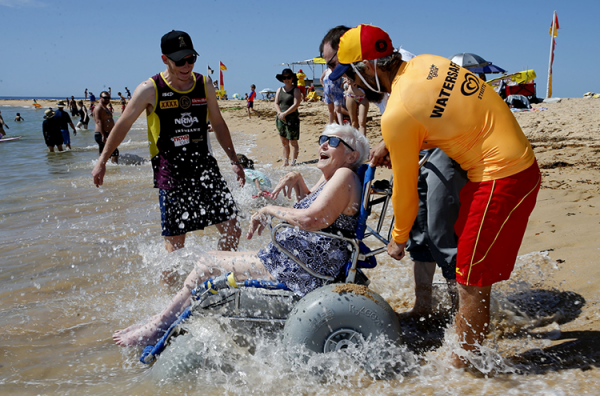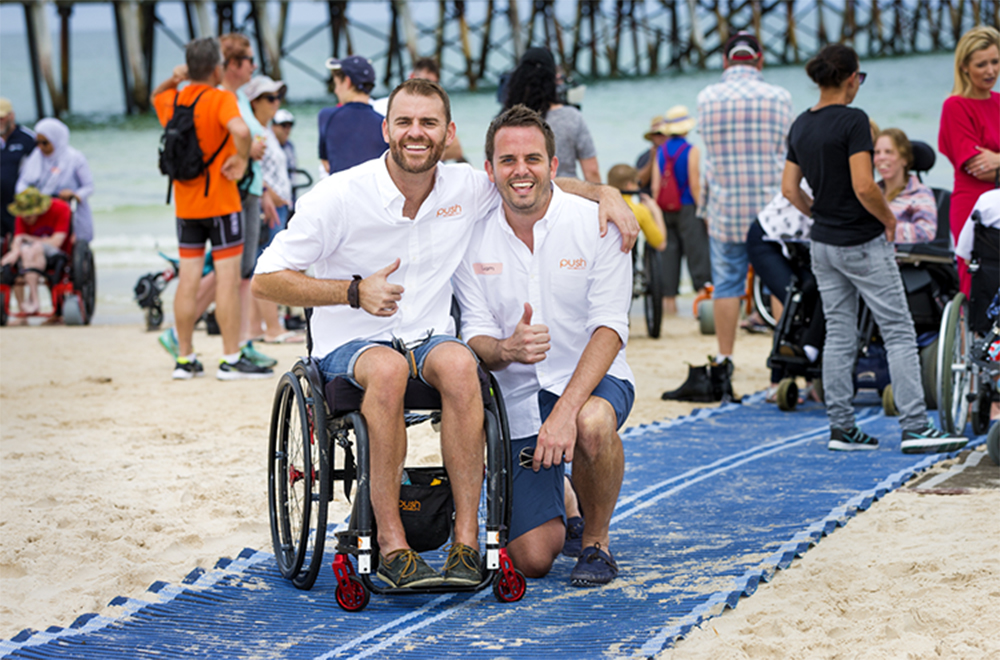Beach lovers with disabilities will appreciate the Accessible Beaches website. With a directory of accessible beaches plus a booking system, it is easier than ever to head down for a surf, play, paddle or swim – and now Sydney’s famous Bondi Beach has hit the list with its new, accessible beach ramp.
Push Mobility managing director and creator of Accessible Beaches, Shane Hryhorec (pictured above, left), spent some time as a surf lifesaver before he broke his neck. “It was once I was in a wheelchair that I started marketing mobility products. I also felt the need to advocate for inclusivity, and particularly advocate for accessible beaches to make the coastline more inclusive,” he told F2L.
The organisation works with local government, Surf Life Saving clubs, people with disability, NGOs, government funded programs and community stakeholders to help it open up beaches to everyone. But councils are one of the biggest challenges. “We receive a lot of pushback from councils. They find it too hard or risky to make the beaches under their jurisdiction accessible and use liability as an excuse. Many councils also have disability action plans but don’t act on these. We have learned, however, that a combination of education and providing great examples of other accessible beaches really helps to break down these barriers down.”
Up until now Accessible Beaches has been an advocacy organisation with all of the work being performed by volunteers with the services provided free of charge. Now, however, Hryhorec is working on setting up Accessible Beaches as a charity with the intention of making as many of Australia’s 10,000 plus beaches accessible.
“Once we are set up as a charity and are able to fundraise, our aim is to continue the growth of inclusive beaches plus make beach facilities, from bathrooms to car parks and barbeque areas, more accessible. We will also provide advice to local councils,” he said.

Today the organisation has over 50 wheelchair-accessible patrolled beaches on its books and each listing includes comprehensive information about booking dates and times, the type of accessibility provided, locations of facilities and beach access areas, and contact information. In addition, depending on the beach, a selection wheelchair types including a floating one that are available for use along with hoists, matting and other assistance.
Accessible Beaches which was founded in 2016, claim around one in five Australians live with a disability and many experience barriers going to the beach such as:
- Lack of accessible car parks, footpaths and amenities, no sand or water access, and a lack of or outdated/damaged access equipment
- Limited or no accessible information publicly available, no accessible signage and little or no access to paid lifeguards and/or volunteer lifesavers
- Individuals and communities limited understanding of people with disability, their tendency to make assumptions, and a perception that access and inclusion at the beach is too difficult or expensive.
Subscribe to the F2L newsletter
Join over 7,500 subscribers for the latest news, products, services and technologies for the disability and rehabilitation sectors. Subscribe here.

